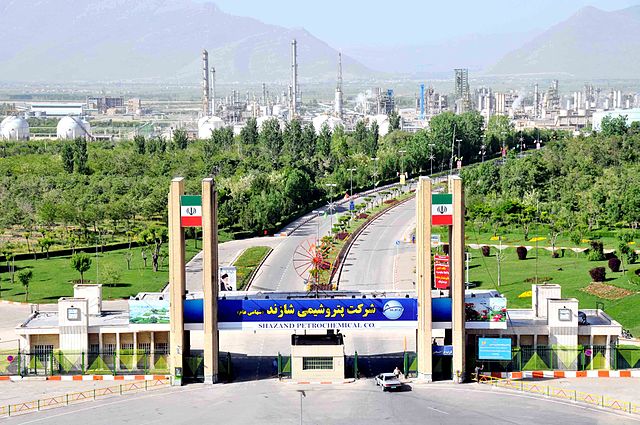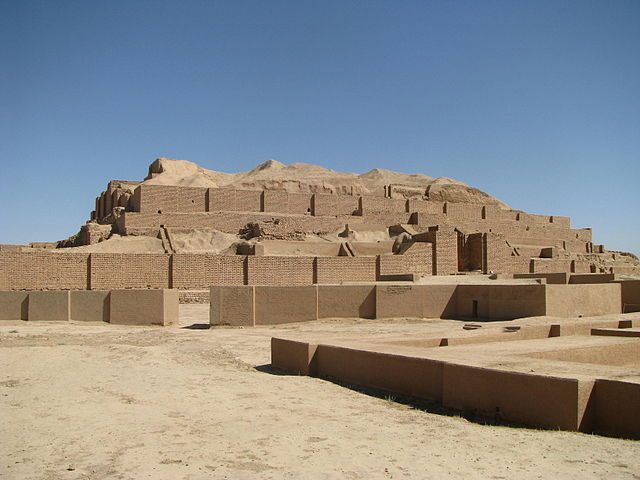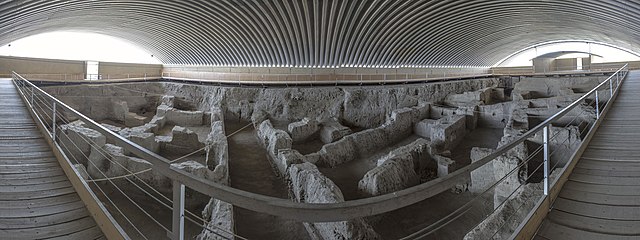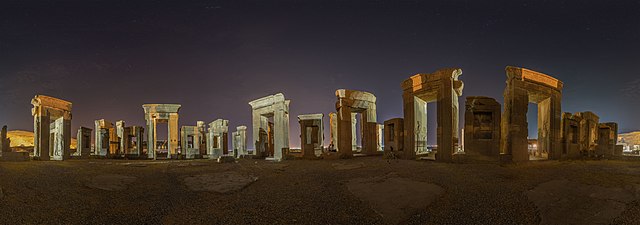Petroleum industry in Iran
Iran is an energy superpower and the petroleum industry in Iran plays an important part in it. In 2004, Iran produced 5.1 percent of the world's total crude oil, which generated revenues of US$25 billion to US$30 billion and was the country's primary source of foreign currency. At 2006 levels of production, oil proceeds represented about 18.7% of gross domestic product (GDP). However, the importance of the hydrocarbon sector to Iran's economy has been far greater. The oil and gas industry has been the engine of economic growth, directly affecting public development projects, the government's annual budget, and most foreign exchange sources.
Iran manufactures 60–70% of its industrial equipment domestically, including various turbines, pumps, catalysts, refineries, oil tankers, drilling rigs, offshore platforms, towers, pipes, and exploration instruments.
Abadan Refinery
Arak Petrochemical complex.
Iran's oil & gas production (1970–2009 data, 2010–2030 projected)
Iran, also known as Persia and officially the Islamic Republic of Iran (IRI), is a country in West Asia. It is bordered by Iraq to the west and Turkey to the northwest, Azerbaijan, Armenia, the Caspian Sea and Turkmenistan to the north, Afghanistan to the east, Pakistan to the southeast, the Gulf of Oman and the Persian Gulf to the south. With a mostly Persian-ethnic population of almost 90 million in an area of 1,648,195 km2, Iran ranks 17th globally in both geographic size and population. It is the sixth-largest country entirely in Asia, the second-largest in West Asia, and one of the world's most mountainous countries. Officially an Islamic republic, Iran has a Muslim-majority population. The country is divided into five regions with 31 provinces. The nation's capital and most populous city is Tehran, with around 16 million people in its metropolitan area. Other major cities include Mashhad, Isfahan, Karaj, and Shiraz.

The well-preserved Inscription of Ardashir Babakan (224–242 AD) in Naqsh-e Rostam: "This is the figure of Mazdaworshipper, the lord Ardashir, King of Iran."
Chogha Zanbil (14th-13th century BC), an ancient Elamite complex in Khuzestan, built by Untash-Napirisha. UNESCO World Heritage Site.
Ecbatana (present-day Hamadan) was chosen as the first capital of Iran by Deioces in 678 BC, the founder of Medes Empire.
Persepolis, the ceremonial capital of the Achaemenid Empire (550–330 BC). It is one of the key Iranian Cultural Heritages.








